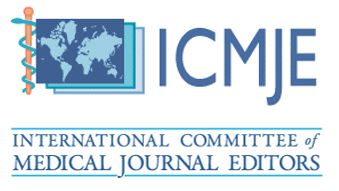A Comparative Study of Bilateral Infraorbital Nerve Block with Intravenous Pentazocine on The Immediate Postoperative Pain Management Following Cleft Lip Repair in Infants
Agbogidi Failat Olushola1*, James Olutayo2, Adamson Olawale Olatubosun2, Desalu Ibironke3, Adeyemo Wasiu Lanre2 and Ogunlewe Mobolanle Olugbemiga2
1 Department of Oral and Maxillofacial Surgery, Lagos University Teaching Hospital, Lagos, Nigeria.
2 Department of Oral and Maxillofacial Surgery, Faculty of Dental Sciences, Lagos University Teaching Hospital, Lagos, Nigeria.
3 Department of Anaesthesia, Lagos University Teaching Hospital, Lagos, Nigeria.
*Corresponding Author: Agbogidi Failat Olushola, Department of Oral and Maxillofacial Surgery, Lagos University Teaching Hospital, Lagos, Nigeria.
DOI: https://doi.org/10.58624/SVOADE.2023.04.0142
Received: May 09, 2023 Published: July 27, 2023
Abstract
Purpose: Comparative evidence of the effectiveness of bilateral infraorbital nerve block for immediate postoperative pain management in infants after cleilorrhaphy especially in Africans is lacking. This study aimed to compare the efficacy of bilateral infraorbital nerve block using Bupivacaine with intravenous Pentazocine for the control of immediate postoperative pain in an infant age group following cleft lip repair.
Methods: This was a prospective randomized controlled clinical study. The sampled population was patient aged 3 to 12 months undergoing cleft lip repair at a tertiary health facility in Lagos, Nigeria. Study patients were randomly allocated to either group 1 (Bupivacaine infraorbital nerve block) or group 2 (intravenous Pentazocine). Primary outcome was the duration of analgesia following the administration of both drugs. Assessment of immediate postoperative pain was done using the FLACC (Face, Leg, Activity, Cry, Consolablity) pain scale. Scoring was done at hourly intervals postoperatively, observing the child for 1 minute at each hour and rescue analgesia (intravenous paracetamol) given when FLACC score exceeds 3. The duration of analgesia was the time of from administration of the intervention to the time rescue analgesia was administered. Calculated sample size was 20 participants per group. Descriptive and comparative statistics were computed using SPSS and the p-value was set at <0.05.
Results: Analysis of result included 44 participants. Mean age was 5.2 months and 52.5% were females. The mean duration of analgesia in the Bupivacaine group was 291.80 ± 95.4 minutes i.e 4 hours 52 minutes and that of Pentazocine group was 151.50 ± 24.9 minutes i.e 2 hours 32 minutes. This difference was statistically significant (p=0.001). At the 3rd hour, 75% of participants in the Pentazocine group received rescue analgesia, in contrast to only 10% in the Bupivacaine group. Only participants in the Bupivacaine attained the 8th hour.
Conclusion: A bilateral infraorbital nerve block with 0.5% plain Bupivacaine at 2mg/kg provided a longer duration of analgesia in the postoperative period in comparison with intravenous Pentazocine 0.5mg/kg in an infant age group following cleft lip repair.
Keywords: Bilateral infraorbital nerve block; pentazocine; pain management, cleft lip repair.
Citation: Agbogidi FO, James O, Adamson OO, Desalu I, Adeyemo WL, Ogunlewe MO. A Comparative Study of Bilateral Infraorbital Nerve Block with Intravenous Pentazocine on The Immediate Postoperative Pain Management Following Cleft Lip Repair in Infants. SVOA Dentistry 2023, 4:4, 145-155.











